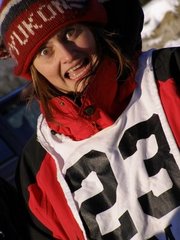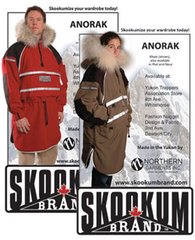The contest is half over now. The puppy is three weeks old and getting big. Any name suggestions can be sent to nameoursleddog@canada.com
NOTE: Sorry for the lack of pictures. I have two videos that I would like to post here. Once I figure out how, I will. Hopefully, it won't take long.
There are two main schools of thought when it comes to training lead dogs. The first are the people who feel it is best for dogs to learn from other dogs; they use an experienced, usually proven dog that knows its' commands and they run it beside a dog they feel has the potential to become a lead dog. The other side feels that there is no better way to train than personally and they will walk with the dogs, working on commands, or they will take an inexperienced dog out on the trail and reinforce commands using 'teachable moments.'
Most often, the latter method is used by people with: limited funds -- good lead dogs are expensive; limited resources -- trying to dogsled in an area with little to no sledding community; limited dogs -- small kennels with few dogs, or a pet or two and a borrowed sled. Not always is this the case, though. Some mushers with the ability to buy good leaders, who live in the middle of a mushing community and have many dogs still prefer to train the dogs personally. However, most use the following method.
Using a proven leader allows the musher to take his team out, knowing that they will be able to navigate the trail network without a lot of difficulty. This lets the musher concentrate on other things, like attaining a milage goal, or breaking in new dogs or practicing camping, overnights and so on. The inexperienced leader will pick up on commands through repetition and good leaders will nudge or tug the dog in the correct direction. This requires no corrections from the musher and the leader-in-training gets to see what is expected by the driver. If any of you have ever thought "it would be so much easier to train my dog if we both spoke the same language" the experienced leader is your translator.
I bring this up because although I would like to try the latter method, circumstances have me using the former method. I can't say which works better but our run last night is certainly an argument for personal training.
Amber has taken over the lead position with Crystal since Ruby has become a mother. At first, Amber didn't know the simplest commands; she wouldn't hold her line tight at hook-up and she would become very unfocused on the trail, wandering from side to side and goofing off. Gradually, though, she has become more serious and much more reliable -- to the point that she may be Ruby's equal, if not her better right now.
Last night we went on a run that took us off familiar trails and through a community center parking lot that had cars, people and confusion. I was expecting a big hassle at the community center, but Amber was flawless. She led the team around a few parked cars and between a snowbank and a van that had just pulled in and was still idling. Quite a progression for a dog that has only been leading for four weeks. She took commands very well, only missing two turns, one which was difficult since it was a snowmachine track that led off of a wide driveway and road intersection.
Today I thought that we should test her a bit more, although I was fairly sure that she would have difficulty. Jenn came with me in the sled so that I would have help if I needed it. We ran our normal trail, but instead of turning 'haw' to come home, we went 'gee' instead, and ended up on a river trail. There were patches of overflow and the trail was braided with snowmachine tracks, but Amber was able to focus on the main trail. Our run would take us right by -- thirty feet from, in fact, -- someones dog yard. I knew this was going to be difficult and Amber had a hard time passing it but once she got pointed in the right direction, she was off and running again. It is difficult for our dogs to pass by a distraction like a dog yard or a house because we don't normally run on trails where these are encountered. It is, however, important that the dogs know what sort of distractions are out there and become able to pass them cleanly.
I think that I would prefer the confidence of an experienced leader for training, but Amber has been very good so far. Tomorrow is supposed to be warm again and the dogs have done well running in this weather, but I think that they can have the day off. Amber could use the break, too, since leading and taking a lot of commands on a short run is stressfull.
Subscribe to:
Post Comments (Atom)
 "Happiness is not achieved by the conscious pursuit of happiness; it is generally the by-product of other activities"
- Aldous Huxley
"Happiness is not achieved by the conscious pursuit of happiness; it is generally the by-product of other activities"
- Aldous Huxley



No comments:
Post a Comment